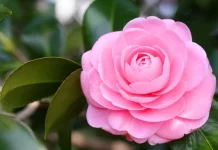Hummingbirds, with their iridescent feathers and rapid wingbeats, are a delightful sight in gardens and play a crucial role as pollinators in our ecosystems. As urbanization shrinks their natural habitats, these charming birds often struggle to find adequate feeding grounds. This article aims to guide gardeners on attracting hummingbirds to their gardens, particularly through native plants, enhancing the garden’s appeal and ecological diversity.
Understanding Hummingbirds
Let’s explore what makes these beautiful birds so special. Hummingbirds are primarily found in North America and are known for their ability to hover in mid-air, thanks to their fast-flapping wings. They are attracted to areas where they can find sufficient food, water, and shelter. Hummingbirds usually feed on nectar from flowers, insects, and spiders.
The Importance of Native Plants
One of the most effective ways to attract hummingbirds is by incorporating native plants into your garden. These plants offer a dual benefit: they are enticing to local hummingbirds and contribute significantly to increasing biodiversity. By choosing the right combination of plants, you can create a haven for hummingbirds, providing them with the necessary food while enjoying their presence in your outdoor space.
How to Bring Hummingbirds to Your Garden
There are many ways to attract hummingbirds to your green space. In this section, we’ll explain six ways to improve your garden to make it a comfortable environment for the birds to thrive.
- Select the Right Plants
When selecting plants, focus on those that are native to your region. These plants are more likely to attract local hummingbirds as they have evolved with them. Look for bright, tubular flowers, which are particularly appealing to hummingbirds. Some popular choices include;
- Trumpet vine (campsis radicans): With its large, trumpet-shaped flowers, this vine is a hummingbird favorite.
- Bee balm (monarda fistulosa): Known for its vibrant and fragrant blooms, bee balm is a must-have for any hummingbird garden.
- Eastern columbine (aquilegia canadensis): This plant offers uniquely shaped flowers that are both beautiful and attractive to hummingbirds.
- Provide a Water Source
Apart from nectar, hummingbirds also need water for drinking and bathing. A shallow water source, like a birdbath or a misting fountain, can be a great addition to your garden. Hummingbirds are particularly fond of moving water, so a fountain with a gentle spray can attract them.
- Create a Sheltered Environment
Hummingbirds also need safe places to rest and nest. Including trees, shrubs, and other foliage in your garden provides them with shelter from predators and harsh weather. Dense shrubs or trees can also serve as potential nesting sites.
- Avoid Pesticides
It’s important to maintain a chemical-free garden. Hummingbirds consume insects and spiders, which can be harmed or depleted by the use of pesticides. A pesticide-free environment ensures a healthy ecosystem for the birds and their food sources.
- Continuous Blooming
Plan your garden so there’s always something in bloom throughout the growing season. This constant supply of flowers ensures that hummingbirds have a steady food source. Rotating blooms also add dynamic beauty to your garden.
- Add a Feeder to Your Garden
While native plants are the best way to attract hummingbirds, supplementing with feeders can provide an additional food source. Fill feeders with a sugar-water mixture (four parts water to one part white sugar), and avoid using red dye. Clean the feeders regularly to prevent mold and bacteria growth.
Enhancing Your Garden’s Appeal for Hummingbirds
In addition to the tips above, additional steps can make your garden more inviting for hummingbirds. First, look to add color and movement to your garden. Hummingbirds are attracted to bright colors, especially red. Incorporating various colorful flowers provides a food source for them and also makes your garden visually appealing to the birds.
The layout of your garden can also impact its attractiveness to hummingbirds. First, create a multi-layer effect in your garden with a mix of low-growing flowers, medium shrubs, and tall trees. This not only adds visual interest but also provides varied feeding and resting spots for the birds. Next, ensure open areas near flower beds for hummingbirds to hover and feed without obstruction.
Lastly, in addition to feeders, you can incorporate other attractive accessories for the birds. Hummingbirds need places to rest, so adding a few thin, bare branches among your plants can provide perfect perching spots. Lastly, wind chimes are a great addition to any garden; in addition to producing a gentle, relaxing sound for you and others enjoying time in your outdoor space, they can also attract hummingbirds’ attention.
Conclusion
Creating a hummingbird-friendly garden requires a combination of the right plants, a safe and nurturing environment, and a commitment to ecological gardening practices. By following these guidelines, you can turn your garden into a thriving habitat for these fascinating birds, contributing positively to your local ecosystem while enjoying the beauty and dynamism hummingbirds bring to your outdoor space. Remember, attracting hummingbirds is not just about aesthetics; it’s about fostering a healthy, sustainable environment where these vital pollinators can thrive.
















